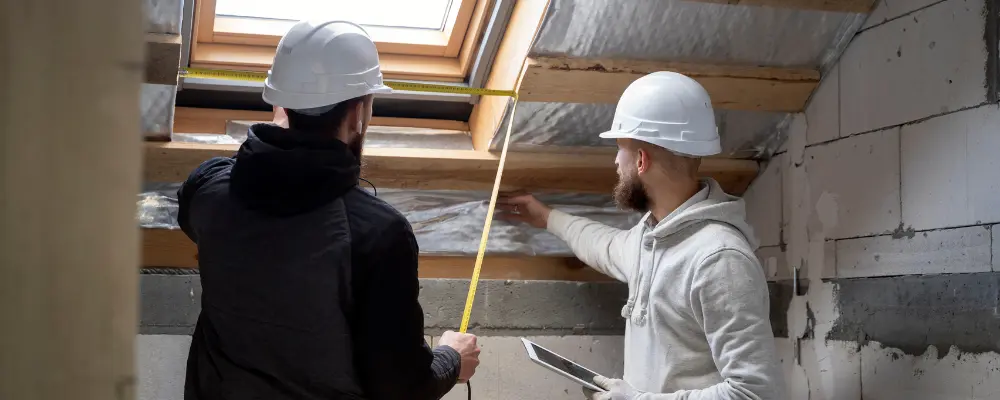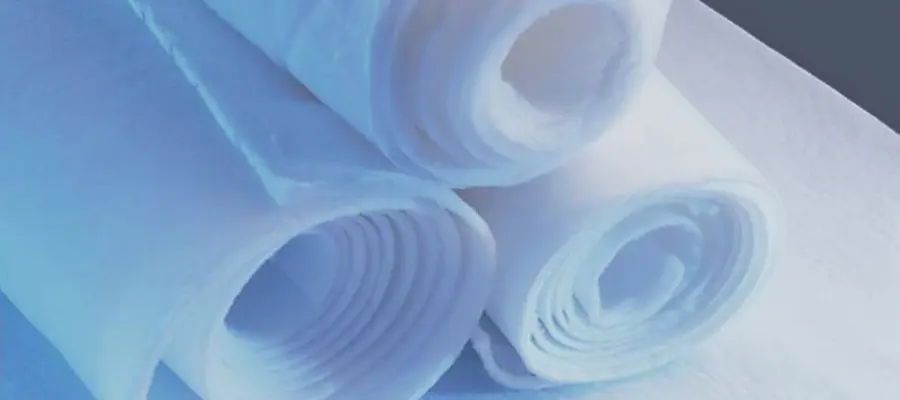The construction industry has started seeking to fulfil net-zero obligations along with economic challenges. New innovative materials are being developed to provide solutions to fulfil those requirements. One of those innovative materials is aerogels.
Because of their outstanding thermal and acoustic insulation properties and fire retardation possibilities, they can be used in the construction of sustainable building construction.
Read this blog to understand more about aerogels.
What is Aerogel?
Aerogel is commonly called “frozen smoke.” It is a synthetic, ultra-light, and porous material derived from a gel. Aerogels include a solid network of nanoporous structures. It has the lowest density. It is prepared by substituting the liquid component of the gel with gas through a drying process without shrinking.
This unique composition provides aerogel insulation with remarkable properties, such as ultralow density, superior thermal insulation capabilities, and superior soundproofing qualities.
Key Properties of Aerogel
The following are the major properties of Aerogel that make it applicable in different areas:
Ultra-low Density: Aerogel has ultra-low density between 0.0011 and 0.5 g cm⁻³, with a typical average of about 0.020 g cm⁻³.
High Porosity: Aerogels have high porosity (<100 nm), often greater than 90%. This interconnected pore structure enables effective gas and heat exchange, enhancing usability across various applications.
Thermal Insulation: Aerogels possess very low thermal conductivity, ranging from 0.012 to 0.025 W/mK. Therefore, this material is used for insulation.
Large Surface Area: Aerogels offer a large surface area ranging from several hundred to over three thousand square meters per gram. This characteristic lends itself to high reactivity and interaction with surrounding environments, making aerogels useful in applications such as catalysts and sensors.
Diverse Composition: Aerogels are composed of diverse materials, such as silica, carbon, and various organic polymers, each contributing to different desirable properties based on their intended use.
Benefits of Aerogel in Sustainable Building
Energy Efficiency
Aerogel insulation in a house reduces excessive energy loss that takes place for heating and cooling for varying weather conditions. As per the study conducted by Balaji, D. et al,(2022) incorporating aerogel insulation for a building can lead to energy savings of up to 40%. Its low thermal conductivity allows for better energy efficiency overall.
Minimal Thermal Conductivity
Aerogel has a lower conductivity, ranging from 0.012 to 0.024 W/(m·K), offering better insulation. Also, aerogel requires much less material to achieve better thermal resistance. This thin profile is beneficial for retrofits, where space constraints are often an issue.
Extremely Flexible:
You can easily buy aerogel insulation products, as they are available in a very handy way, such as aerogel sheets, aerogel concrete, and aerogel blankets. They are also available in roll forms with various sizes and dimensions. You can cut them easily based on your requirements (required shapes and sizes). You can use them on any surface like walls, roofs, floors etc. Thermal insulation can be achieved in several ways, including aerogel in composites, coatings, textiles, and films.
No Need for Binders:
Aerogels are naturally stable, both thermally and physically, even at high temperatures. Thus, it won’t require any organic binders. Therefore, without organic binders, you can remove the potential of degradation or structural compromise when exposed to heat.
Moisture Resistance
Most of the aerogel is hydrophobic in nature. It won’t absorb moisture content even in humid conditions like monsoons. Thus, it reduces the risk of mould and mildew. This special quality increases the durability of structural elements. Also, aerogel insulation is breathable in any form. This breathable nature allows the water vapour to pass through the insulation system when the walls or equipment are heated.
Eco-Friendly
Compared to other regular insulation options, aerogel insulation is better for the environment. Silica, carbon, and other non-toxic, inert, eco-friendly elements are used to manufacture aerogels. This nature makes aerogel a safer substitute for foaming insulation materials, which may release VOCs and other possibly dangerous substances. This promotes eco-friendly home design.
Lifespan:
Compared to more traditional insulation options, aerogel insulation lasts much longer and is more durable. You can depend on aerogels for their long life span. They are moisture- and compression-resistant and don’t undergo chemical deterioration. Obviously, it lasts longer.
Acoustics Property
Aerogels offer considerable acoustic properties, making them effective materials for sound absorption and insulation. As per the study conducted by Budtova, T. et al. (2022), the low density of the aerogel composites slows the propagation of sound waves and increases acoustic absorption. Aerogel material’s stiffness and density reduce sound reflection.
Fire-Retardant Property
Based on the study conducted by Yang, W.-J. et al. (2022), aerogels can function effectively in fire safety applications, maintaining their structural integrity under heat exposure and minimising fire risks.
Aerogel Applications in Building Construction

The above aerogel’s favourable properties make them suitable for many applications. The following are some general applications in building construction:
Aerogel Insulation for Walls
You can include aerogel blankets as advanced insulation material with hydrophobic properties for exterior walls. This can prevent heat loss from the exterior wall to the environment. You can use them for both sides of the wall for better efficiency. This aerogel insulation for walls can protect the structure from humid conditions, making the walls damp-proof.
Aerogel Insulation for Roof
Including an aerogel insulation layer in the roof, you can achieve a cold roof in summer and a warm roof in winter. You can include an aerogel blanket to insulate at ceiling level in a loft space and on room-in-roof stud walls. It is easy to install internally over the existing plaster finish with tight space constraints. This can offer good performance and remove the thermal bridging from roof timbers. Aerogel can also be used on the rafters on a roof; however, careful attention is essential to the junctions at the eaves, the gables, and the ridge to make sure that the insulation is continuous and airtight.
Due to its hydrophobic nature, it provides more support to roofs and protects the house from structural damage.
Aerogel Window and Door Frame Insulation
In most cases, windows and doors for entry and exit are the main reasons behind the great energy loss. To avoid this loss, you need to insulate all door and window frames with aerogel. With this insulation, you can fill the gap from the wall insulation to the window frame. Due to its hydrophobic properties, you can seal door and window frames tightly. This also lowers the loss of heat, which is associated with the airflow.
Aerogel Floor Insulation
By including aerogel blankets in floor construction, you can reduce the need to trim internal doors or skirtings. Its special properties, like thermal efficiency, high compression strength, and a thin profile, make aerogel insulation well suited to the underfloor insulating layer.
The installation process of aerogel blankets is simple and fast on timber or wooden floors, and you can do this without disturbing the door fittings. It is also a great budget-friendly solution for the renovation of basements. Aerogel insulation can be installed with radiant floors to save energy and promote a faster heating cycle.
Challenges and Limitations of Aerogel Insulation in India
Expensive: Aerogel insulation is more expensive than other traditional insulating systems.
Difficult to Handle: You can expect aerogels to be brittle and fragile, mainly in their purest form. To solve this, aerogels are often included in flexible blankets or combined with other materials to enhance their durability. Also, special care must be taken during transportation and installation to prevent damaging the material.
Limited Availability
There is limited availability of aerogel products in India, which restricts access for builders and consumers. According to a market review conducted by IMARC Group expects, the India aerogel market size reached USD 46.35 million in 2024. They expect the market to reach USD 109.23 million by 2033, displaying a growth rate (CAGR) of 9.22% during 2025-2033. Currently, India does not produce sufficient aerogel products to meet the customer’s demand. So, people have to depend on other countries for aerogel products, which can cause delays in projects and make them more expensive.
Common Aerogel Products Used in Indian Buildings
Aerogel Granules
Aerogel granules are used to fill the cavities in double walls to achieve thermal insulation. Aerogel granules possess a thermal conductivity typically between 13 and 24 mW/(m·K). This product eases renovation work without the disruption of any building component. But, follow appropriate filling methods to avoid the production of dust, which can easily flee through small cracks.
Aerogel Blankets
Aerogel blankets offer about a 60% reduction in heat loss, making them highly effective for thermal insulation applications. Based on the type and environmental conditions, they exhibit very low thermal conductivity, typically ranging from 0.013 to 0.024 W/m·K. This makes them ideal for minimising heat transfer and improving energy efficiency in buildings. Aerogel blankets exhibit excellent fire resistance; they can resist temperatures as high as 1,000°C (1,832F) or more. Thus, they are classified as A2 under fire behaviour standards, indicating they are non-combustible and have limited smoke production. Aerogel blankets are suitable for internal walls because of their breathable nature and ability to adapt to uneven surfaces. Their flexibility allows easy installation in challenging spaces, such as curved or irregular walls.
Aerogel Boards
Aerogel boards are prepared by connecting several layers of aerogel blankets/sheets. Thus, this will be rigid and have more thickness than aerogel blankets. They are also made by binding aerogel granulates into boards with the help of lamination. The thermal conductivity of the aerogel board varies from 16 to 19 mW/(m.K). They are best suited for the insulation of interior walls.
Aerogel Panels
Aerogel panels are made by filling aerogel granules between two translucent or transparent panes. This will create an aerogel translucent panel. The panels can be made of either glass or plastic. These translucent panels are securely sealed on both sides to prevent the entry of dust. The thermal conductivity value of this product is around 19 mW/(m.K). This product can combine the high thermal insulation property with the transmission of diffused light.
Aerogel Concrete
Aerogel concrete is made using aerogel granules or powder as the main ingredient. Aerogel concrete combines the concrete’s high strength property with Aerogel’s high thermal insulation.
Aerogel concrete offers high compressive strength and comparable thermal conductivities, making it an appropriate option for the construction of exterior walls of multi-level buildings without additional insulation.
Cost of Aerogel Products in the Current Indian Market
The following are prices for various aerogel products available in the Indian market:
| Aerogel Product | Description | Cost (INR) |
| Aerogel Granules | 80ml Aerogel Granules | ₹ 5,903 |
| Aerogel Blankets | Aerogel Insulation Blanket | ₹ 2,350/square meter |
| Aerogel Boards | White Aerogel Fiber Board | ₹ 1,500/piece |
| Aerogel Panels | Silica Aerogel Insulation | ₹ 3,500/square meter |
On a final note, by using aerogel insulation products in house construction, you can build your home sustainably with exceptional thermal insulation. This will help you reduce energy consumption and minimize your carbon footprint on the environment. If you take extra care during transportation and installation, you can successfully incorporate this specialized insulation material into your home.
To ensure that such advanced materials are used effectively, partnering with a reliable construction company is essential. Brick & Bolt is a tech-enabled construction company based in India that offers transparent pricing, rigorous quality assurance with over 470 quality checks, and real-time project tracking for residential and commercial construction projects. Their services are designed to make the construction process efficient, stress-free, and accessible, making them a suitable choice for implementing innovative and sustainable building materials like aerogel insulation in your home.

